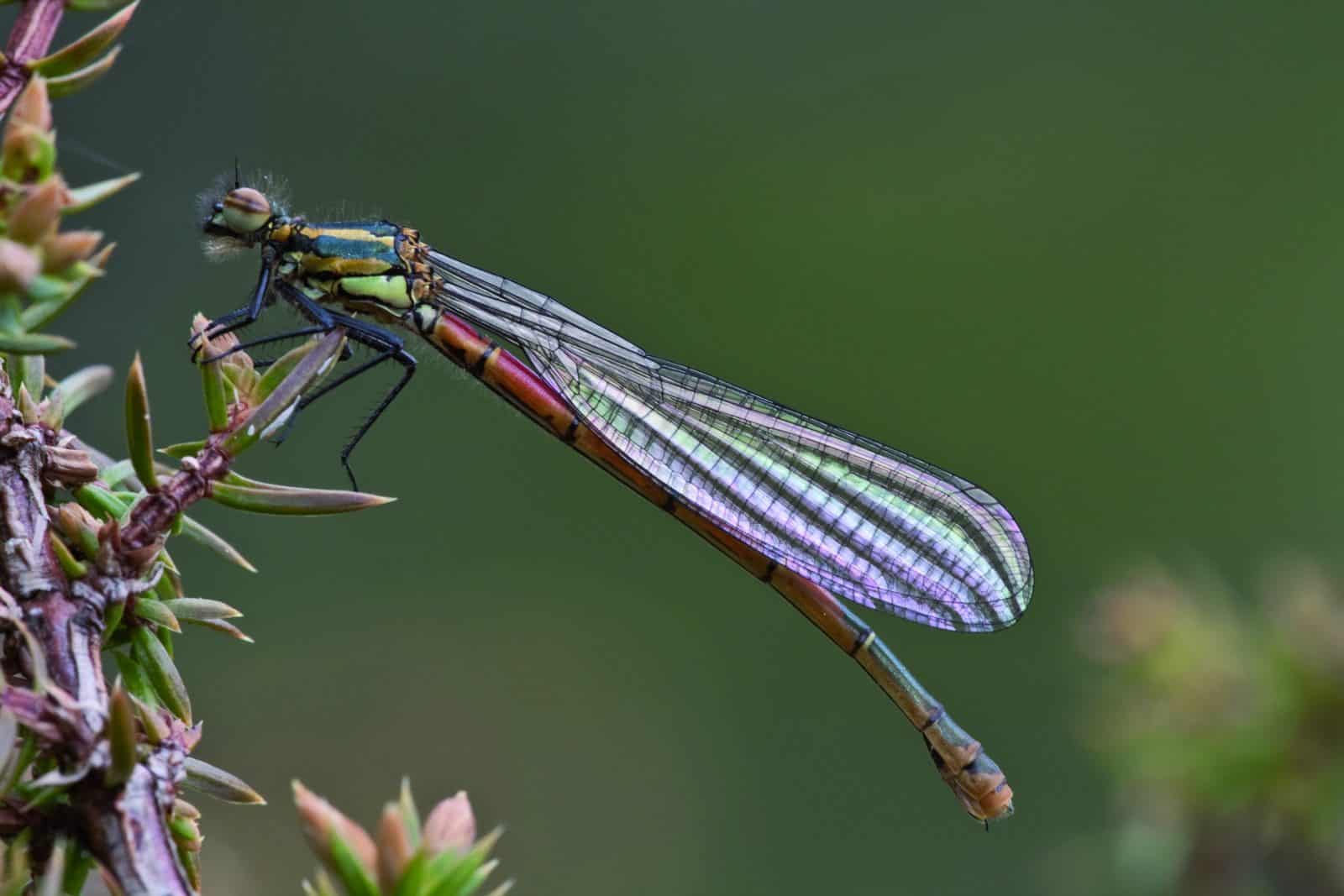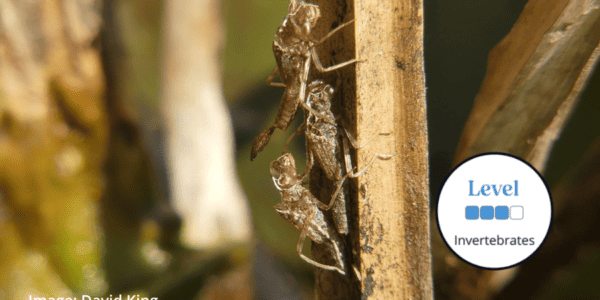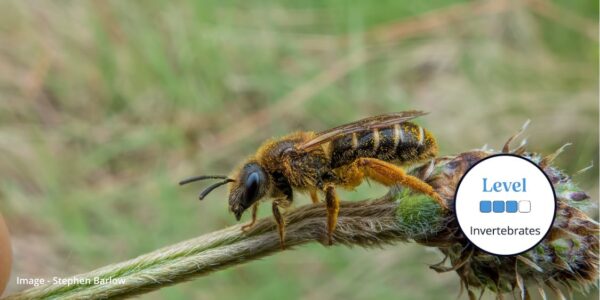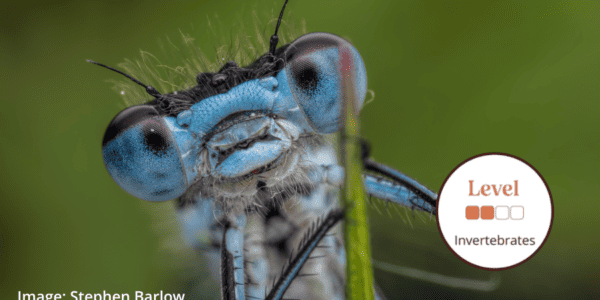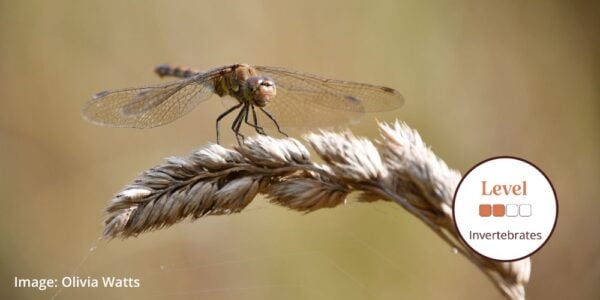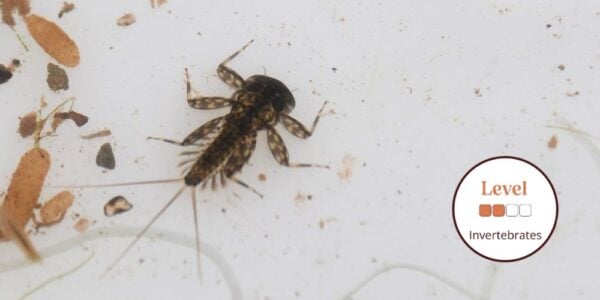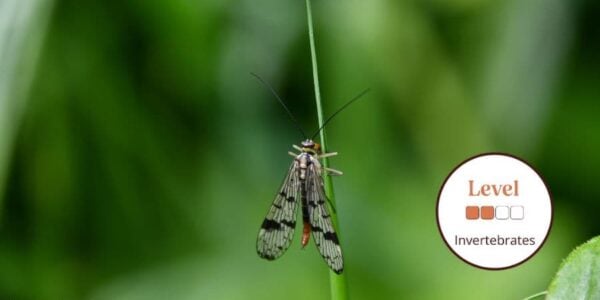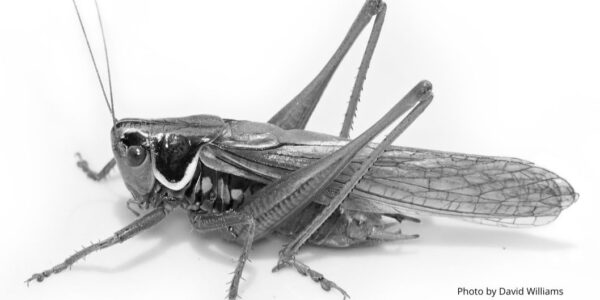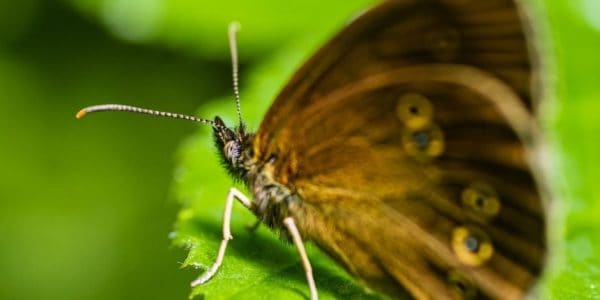
Dragonflies and damselflies are insects which together form the order ‘Odonata’, which is derived from the Greek ‘odonto’ meaning tooth- referring to the strong mandibles that adults have.
Dragonflies and Damselfies
Dragonflies and damselflies are semi-aquatic insects, with their larvae being aquatic, and their adults being terrestrial. Although we all tend to think of the colourful adults when we think of these insects, it actually spends the greatest proportion of its life in the larval form. Some dragonflies will spend between 1-3 years in freshwater as larvae, yet the adult will only live for a few months. Therefore, having a consistent supply of good quality water is incredibly important to these insects. Because of this, they are an important indicator species for investigating the health of freshwater habitats.
Dragonfly and Damselfly Identification
There are approximately 30 species of dragonfly and 20 species of damselfly found in the UK. Many of the adults are beautifully coloured and most of them can be identified in the field once you get your eye in. They are often considered one of the entry-level groups for new recorders, largely due to the fantastic identification resources available for all life stages.
Dragonflies and damselflies are taxonomically split into two distinct suborders’ ‘Anisoptera’ and ‘Zygoptera’. Dragonflies belong to the Anisoptera, which means unequal wings and damselflies belong to the Zygoptera, which means equal wings. Distinguishing between the two suborders is relatively straight-forward:
Anisoptera: Large, powerful fliers. Front and hind wings are different shapes and, when at rest, the wings are held at right angles to the body. In most species the eyes touch.
Zygoptera: Small, weak fliers. Front and hind wings are identical in shape, and when at rest, the wings are held together over the abdomen. Eyes are separated.
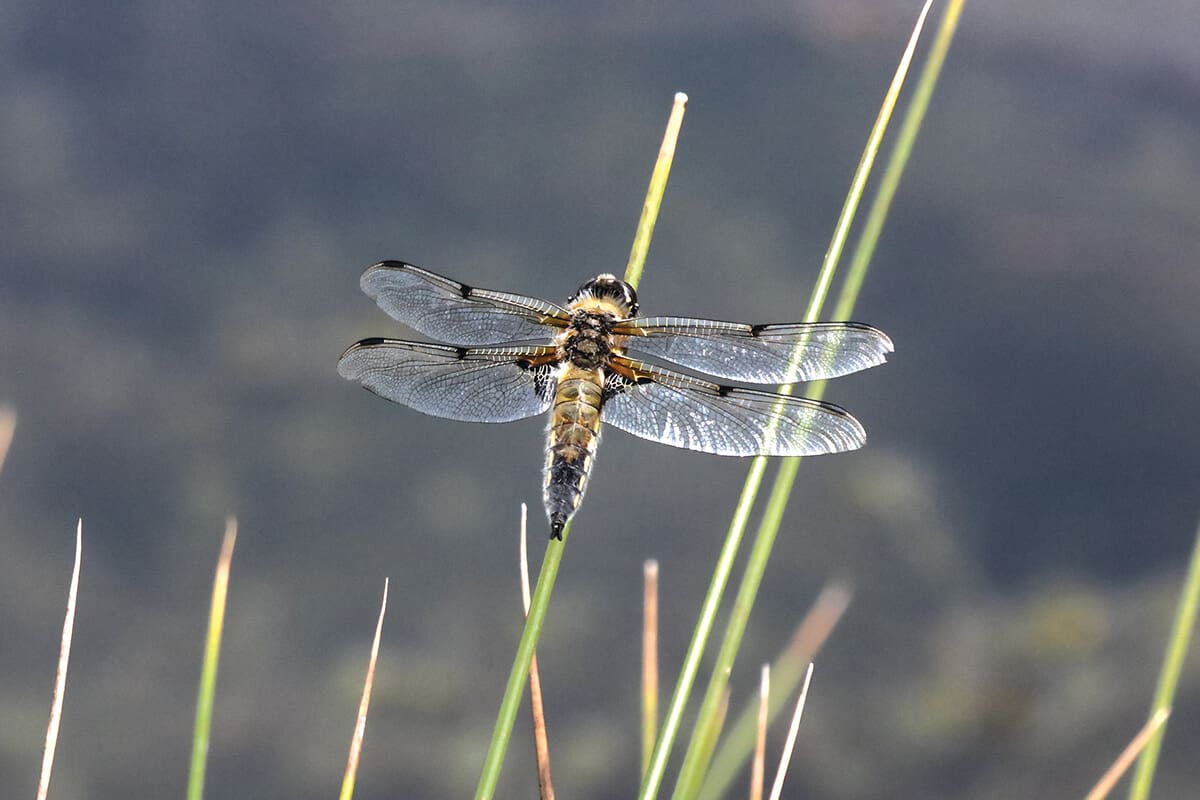
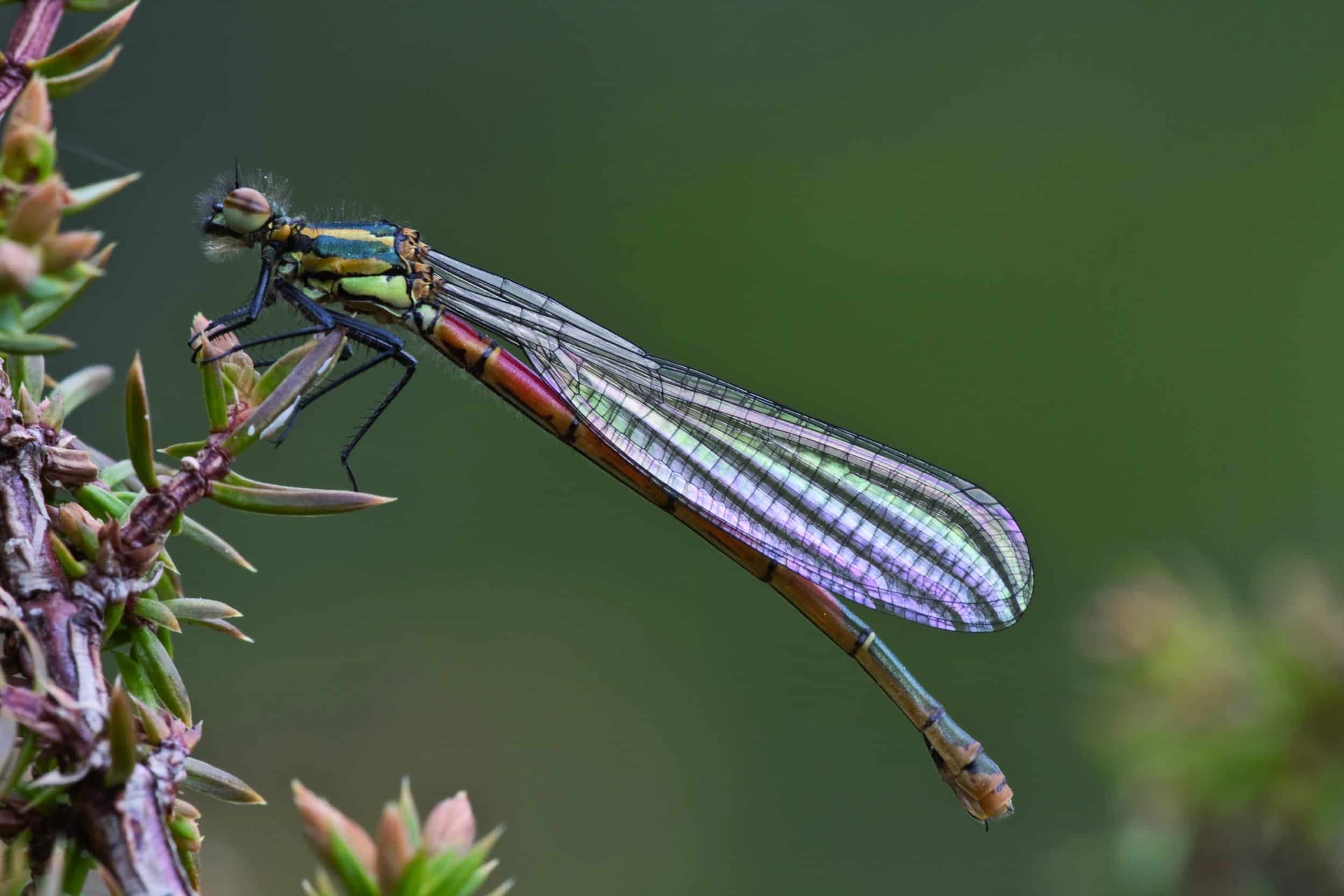

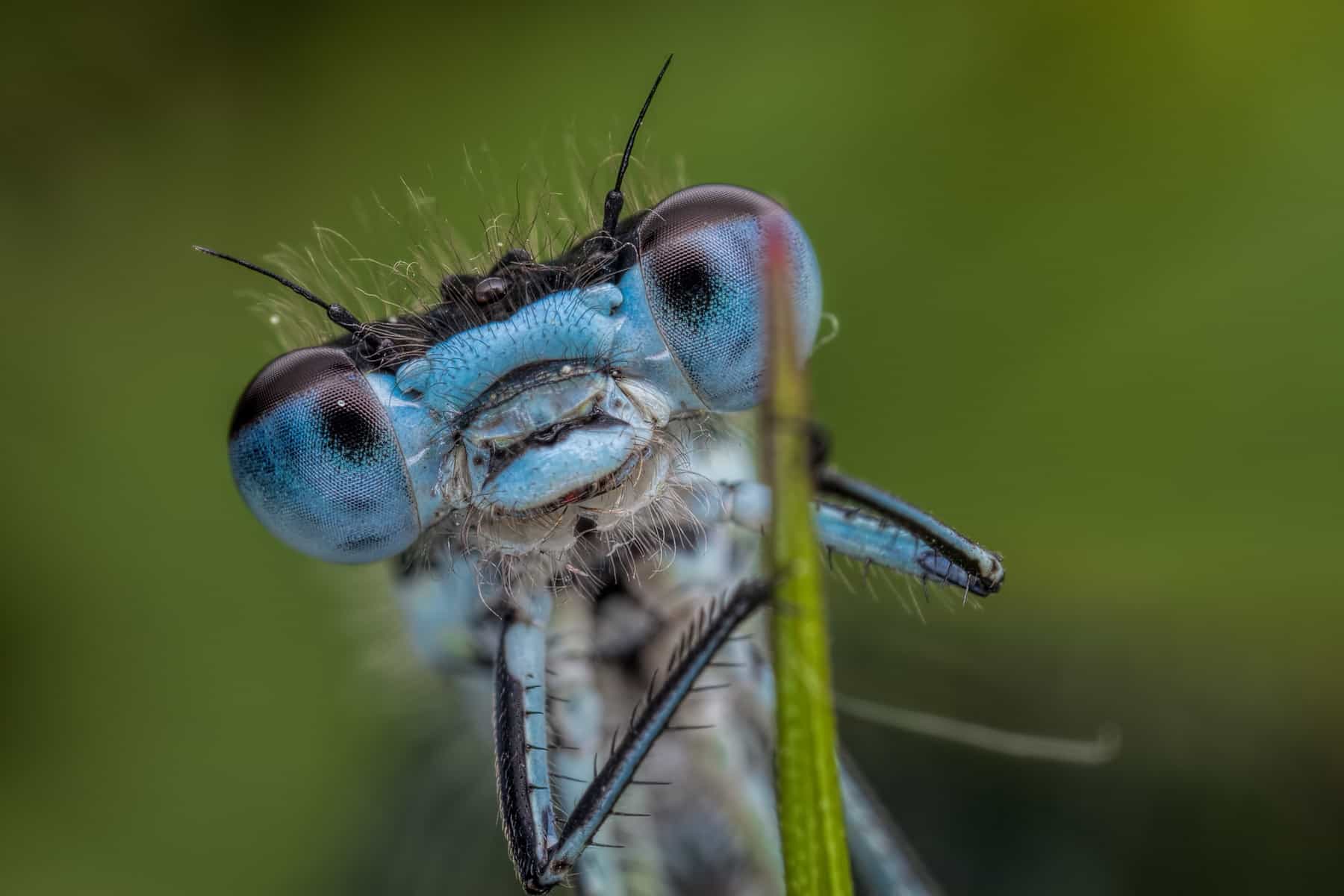
Dragonfly and Damselfly Courses
Dragonfly and damselfly identification courses are led by expert tutors who are passionate about the subject. Courses are available at all levels; starting with adult identification for beginner learners, and progressing through to larval and exuviae identification for intermediates and advanced learners.
Dragonfly and damselfly courses and training will be led by expert tutors who are passionate about the subject. Taking place at venues across the UK, or online, our courses are designed to progress your learning at a level to suit your needs. If you are interested in our amphibian online training, you can read about our Moodle learning environment.
Each dragonfly and damselfly Courses is part of a learning framework. You can see the course level descriptions here. Natural history courses are available at all levels from beginner through to professional training
Dragonfly and Damselfly Identification Resources
The Dragonflies Guide features adults of 28 dragonfly species and 16 damselfly species. Enabling speedy dragonfly identification in the field, it features beautiful life-size colour paintings shown by Richard Askew. Different forms for males and females feature where appropriate.
The BRC Dragonflies Atlas shows the distribution and reviews the recent status of all 57 species of Britain and Ireland. It also includes species accounts, including maps, for all resident and immigrant species, as well as high quality colour photographs of all species and their habitats.
Other Organisations
The British Dragonfly Society are the voice for dragonflies in Britain, working hard to conserve them and their habitats. For more details about the work of the British Dragonfly Society, visit www.british-dragonflies.org.uk.

